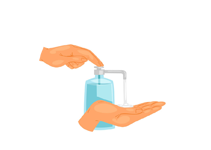Acetazolamide
Acetazolamide is a medication that belongs to the class of carbonic anhydrase inhibitors. It is commonly used to treat conditions such as glaucoma, edema, and altitude sickness. Acetazolamide works by reducing the production of fluid in the eye, lowering eye pressure in glaucoma patients, and by helping the body adapt to high altitudes. It is also used to treat conditions related to fluid retention, such as heart failure or kidney disease. The medication helps manage symptoms effectively and is often used in conjunction with other therapies for various medical conditions.
Uses of Acetazolamide
- Treats glaucoma by lowering intraocular pressure.
- Helps prevent and treat altitude sickness by improving breathing and reducing fluid buildup in the body.
- Used to treat edema (fluid retention) caused by heart failure, kidney disease, or other conditions.
- Treats seizures in certain cases, as it has anticonvulsant properties.
- Helps with metabolic alkalosis by reducing bicarbonate levels in the blood.
How Acetazolamide Works
Acetazolamide works by inhibiting carbonic anhydrase, an enzyme that plays a role in the production of bicarbonate. By blocking this enzyme, Acetazolamide reduces the production of fluid in the body, including the aqueous humor in the eyes, which lowers intraocular pressure in glaucoma. In conditions like altitude sickness, Acetazolamide helps balance the acid-base status in the body, reducing symptoms like dizziness and shortness of breath. It also facilitates fluid and electrolyte balance, which is helpful in treating edema.
Benefits of Acetazolamide
- Reduces intraocular pressure, effectively managing glaucoma and preventing damage to the optic nerve.
- Prevents and treats altitude sickness, alleviating symptoms such as headaches, nausea, and dizziness.
- Helps manage fluid retention (edema) associated with conditions like heart failure and kidney disease.
- Improves breathing and oxygen efficiency at high altitudes, making it easier to acclimatize.
- Can help control seizures in certain types of epilepsy and other neurological disorders.
How to Take Acetazolamide
Acetazolamide is typically taken in the form of oral tablets. The dosage depends on the condition being treated, and your doctor will determine the appropriate dose. It is important to follow the prescribed schedule and dosage instructions closely. Acetazolamide can be taken with or without food. For treating altitude sickness, it is often started 24 hours before ascending to high altitudes and continued for a few days after reaching the destination.
Types of Dosage Available
- Acetazolamide 125 mg tablet
- Acetazolamide 250 mg tablet
- Acetazolamide 500 mg tablet
Side Effects of Acetazolamide
- Common side effects include tingling or numbness in the fingers and toes, dizziness, and increased urination.
- Some patients may experience gastrointestinal issues like nausea, vomiting, or diarrhea.
- Can cause drowsiness, fatigue, or blurred vision in some individuals.
- Serious side effects include electrolyte imbalances (low potassium, sodium), kidney stones, and severe allergic reactions.
- In rare cases, Acetazolamide may cause changes in mood or mental status, including confusion or depression.
Safety Advice
- Consult your doctor if you have a history of kidney disease, liver disease, or electrolyte imbalances before using Acetazolamide.
- Regular monitoring of kidney function and electrolyte levels may be necessary during treatment.
- Avoid sudden discontinuation of the medication without consulting your healthcare provider to prevent withdrawal symptoms.
- Drink plenty of fluids to stay hydrated, especially if you're taking Acetazolamide for altitude sickness or fluid retention.
- Notify your doctor if you are pregnant or breastfeeding, as Acetazolamide may not be suitable for use during pregnancy.
Frequently Asked Questions (FAQs)
Q: Can Acetazolamide be used for treating high-altitude sickness?
A: Yes, Acetazolamide is commonly used to prevent and treat symptoms of altitude sickness. It helps improve oxygenation and reduces symptoms like dizziness and shortness of breath.
Q: How long does it take for Acetazolamide to work for glaucoma?
A: Acetazolamide begins to work quickly, usually within a few hours, to lower intraocular pressure in glaucoma patients. Full effects may take several days to achieve optimal pressure reduction.
Q: Are there any dietary restrictions while taking Acetazolamide?
A: There are no specific dietary restrictions while taking Acetazolamide. However, you should avoid excessive alcohol consumption, as it can increase the risk of side effects like dizziness and dehydration.
Q: Can Acetazolamide cause kidney stones?
A: Acetazolamide can increase the risk of kidney stones in some people. It's important to stay hydrated while taking the medication to minimize this risk. Talk to your doctor about how to prevent kidney stones.
Download India's most affordable pharmacy app
- Compare with medicine prices
- Save upto 90% on your medicine bills

Temperature Controlled storage and delivery

Regular Sanitization

Disinfected Packaging















 Added!
Added!